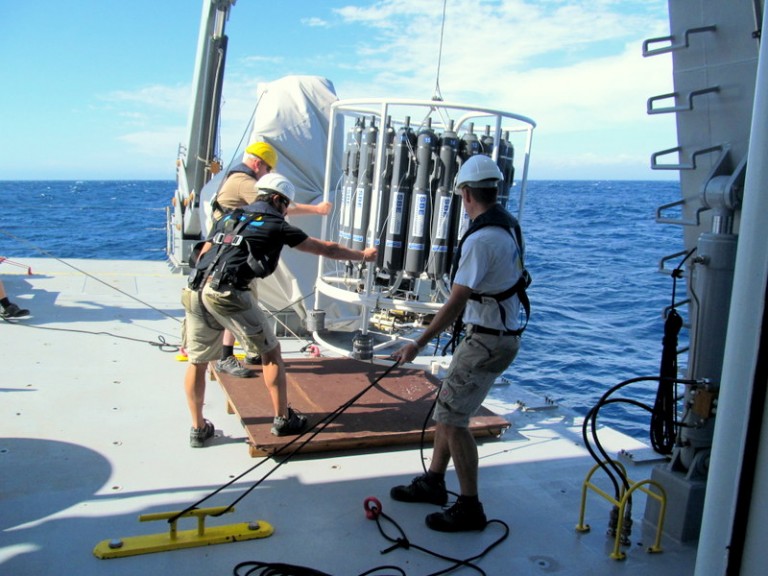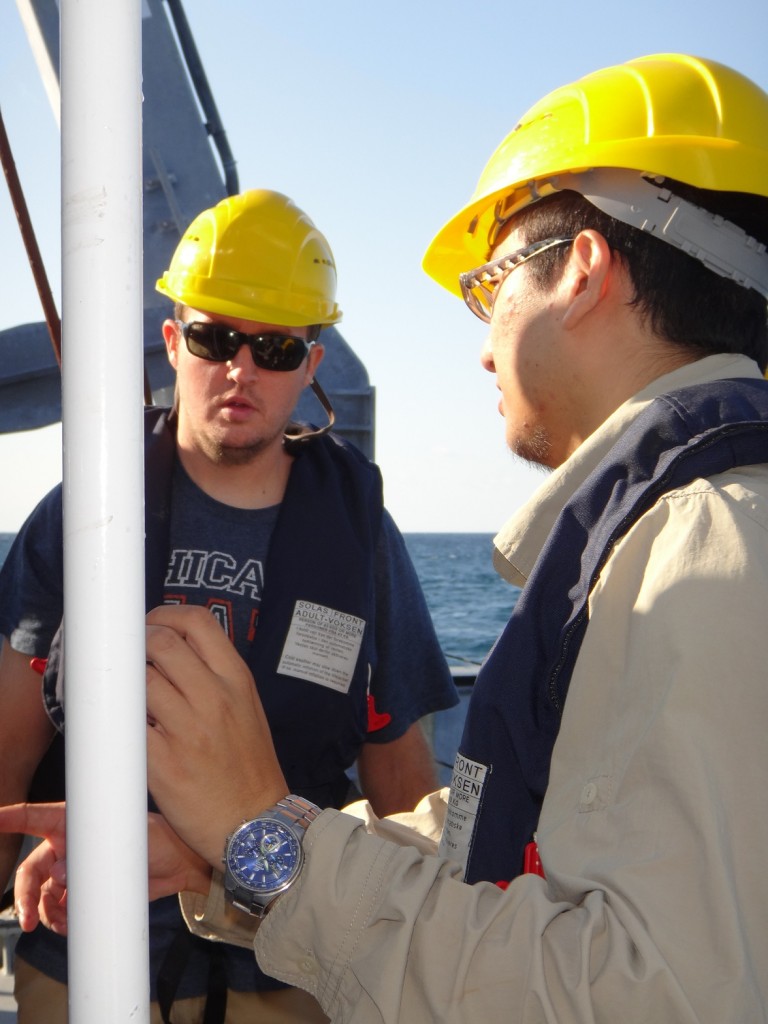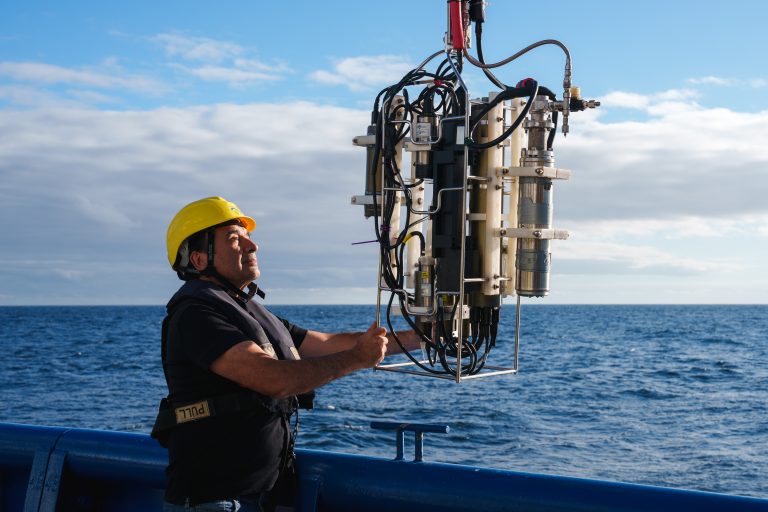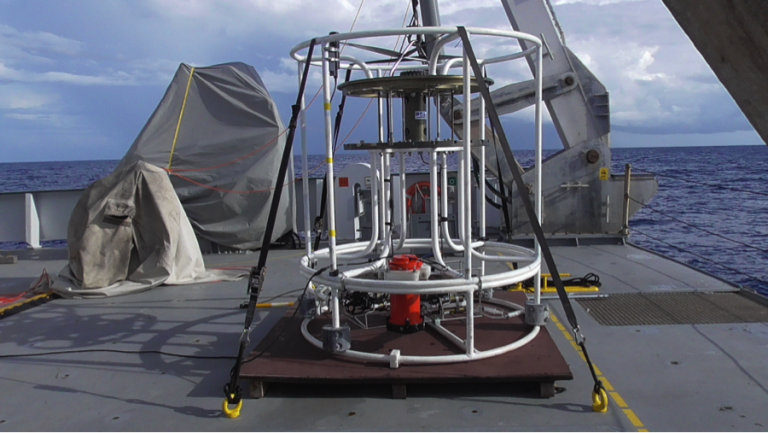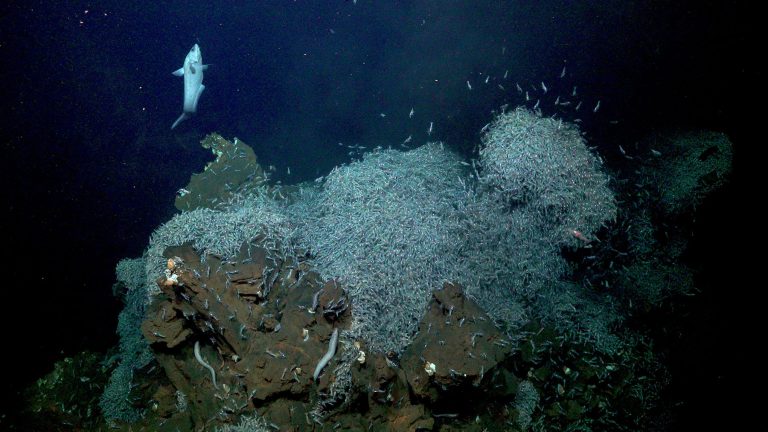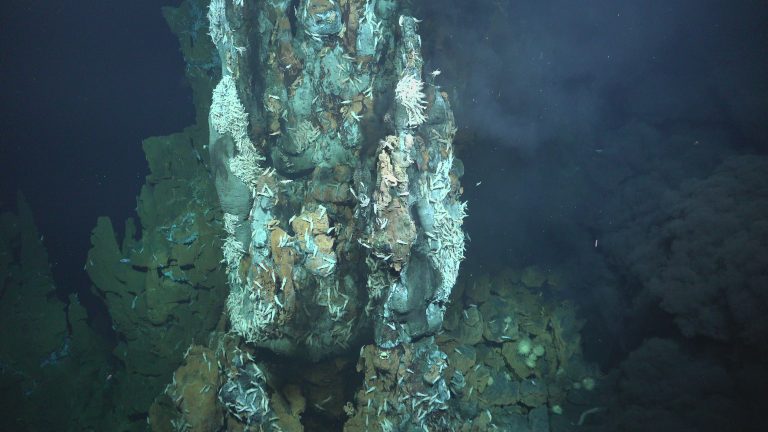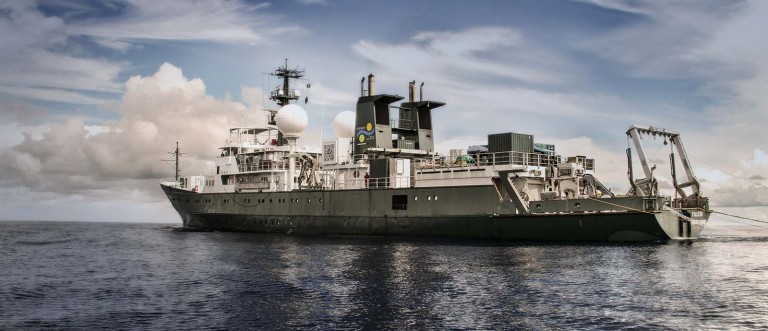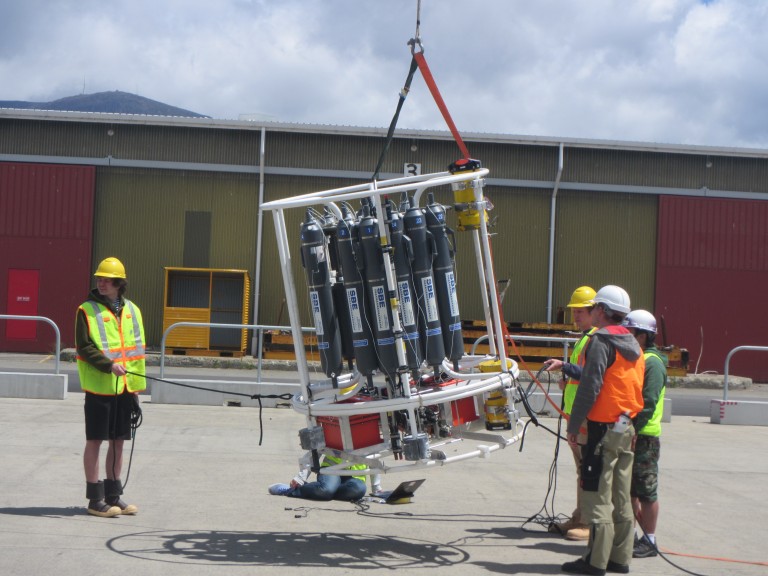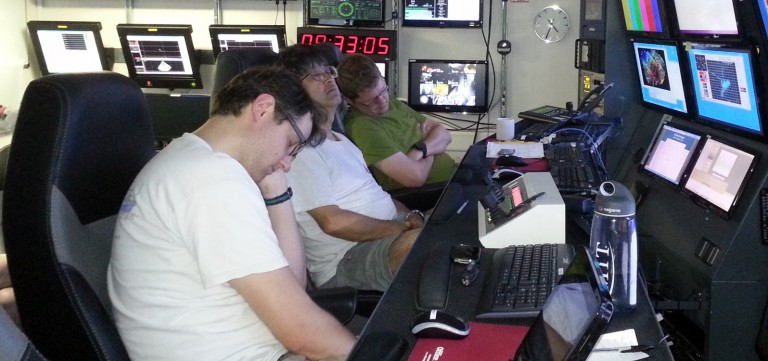Log Post: A Delicate Life Balance for Deep-Water Microbes
On July 24 and 25, researchers and the crew aboard R/V Falkor cast the Conductivity, Temperature and Pressure Rosette (CTD) to depths of 5,000 and 4,300 meters, respectively. The CTD casts took place about 300 miles east of Nova Scotia in some of the deepest parts of the Atlantic Ocean. R/V Falkor ventured into waters … Continued
